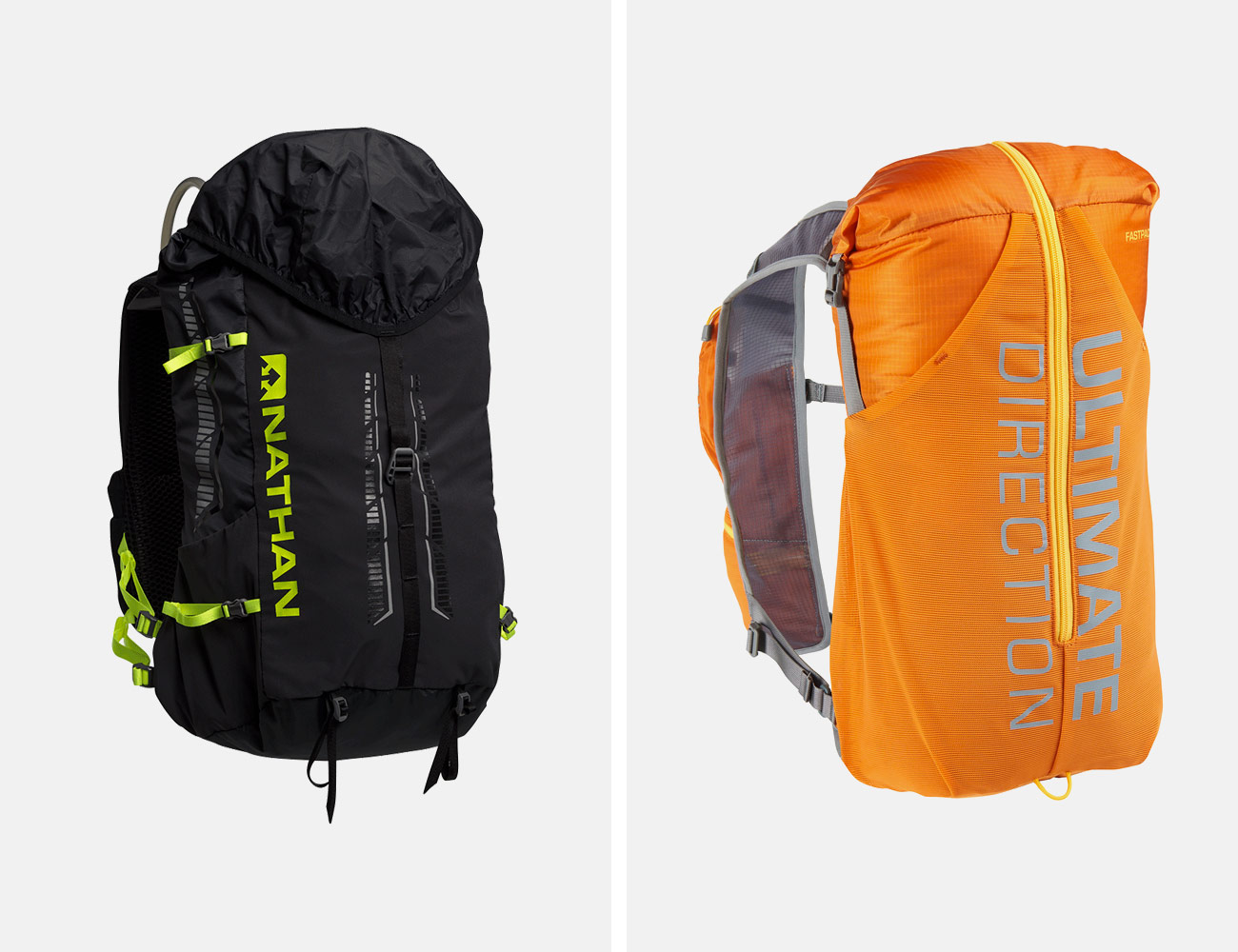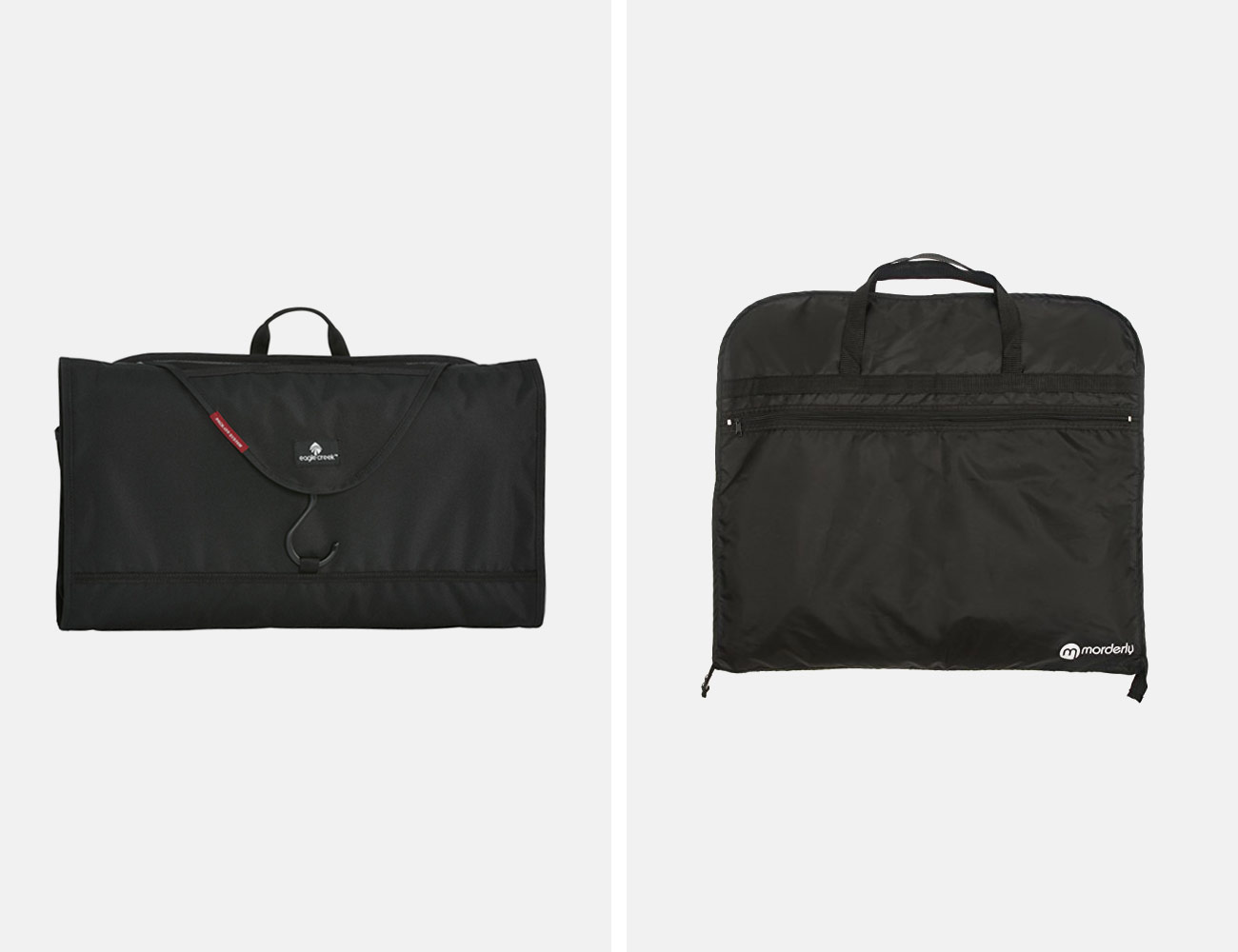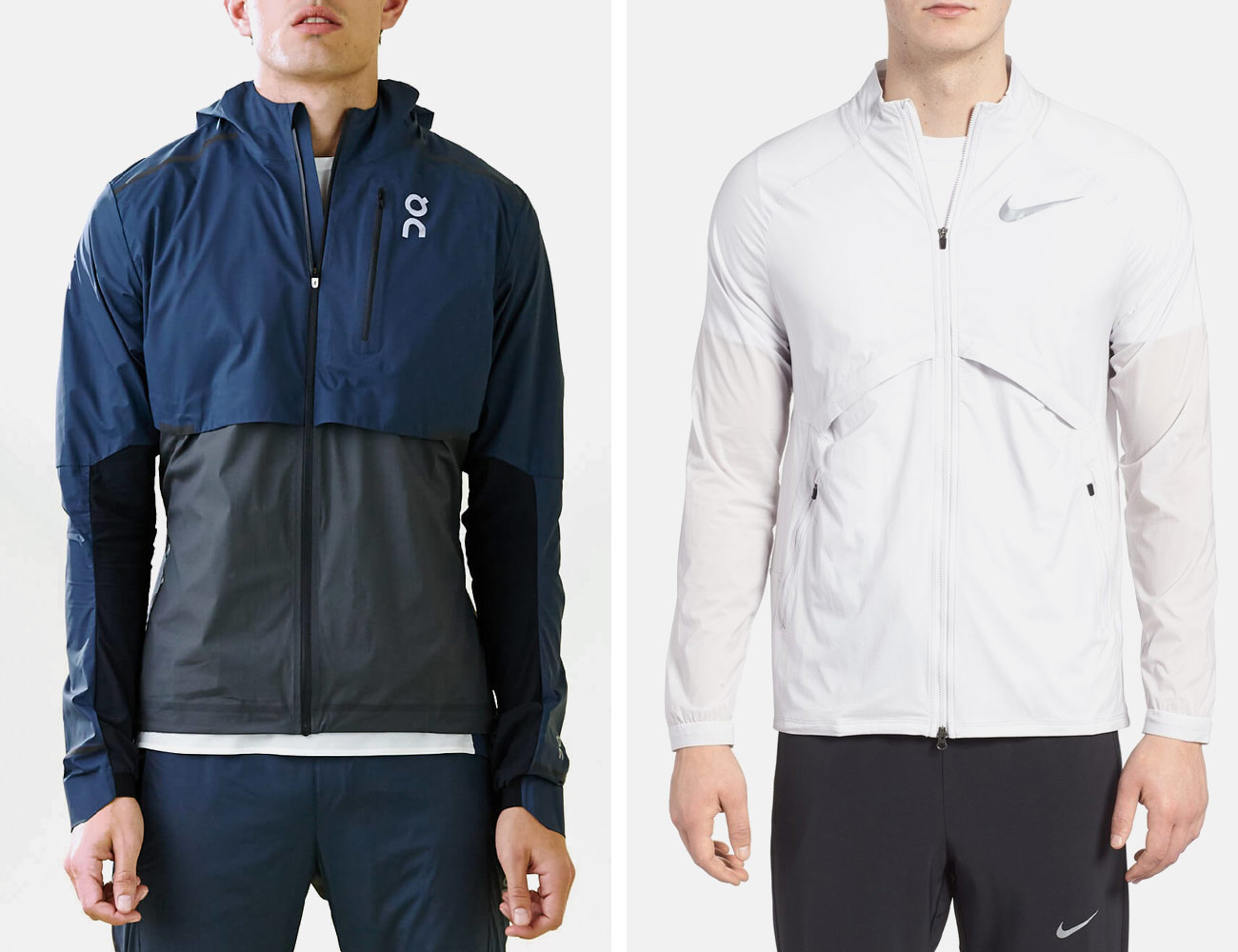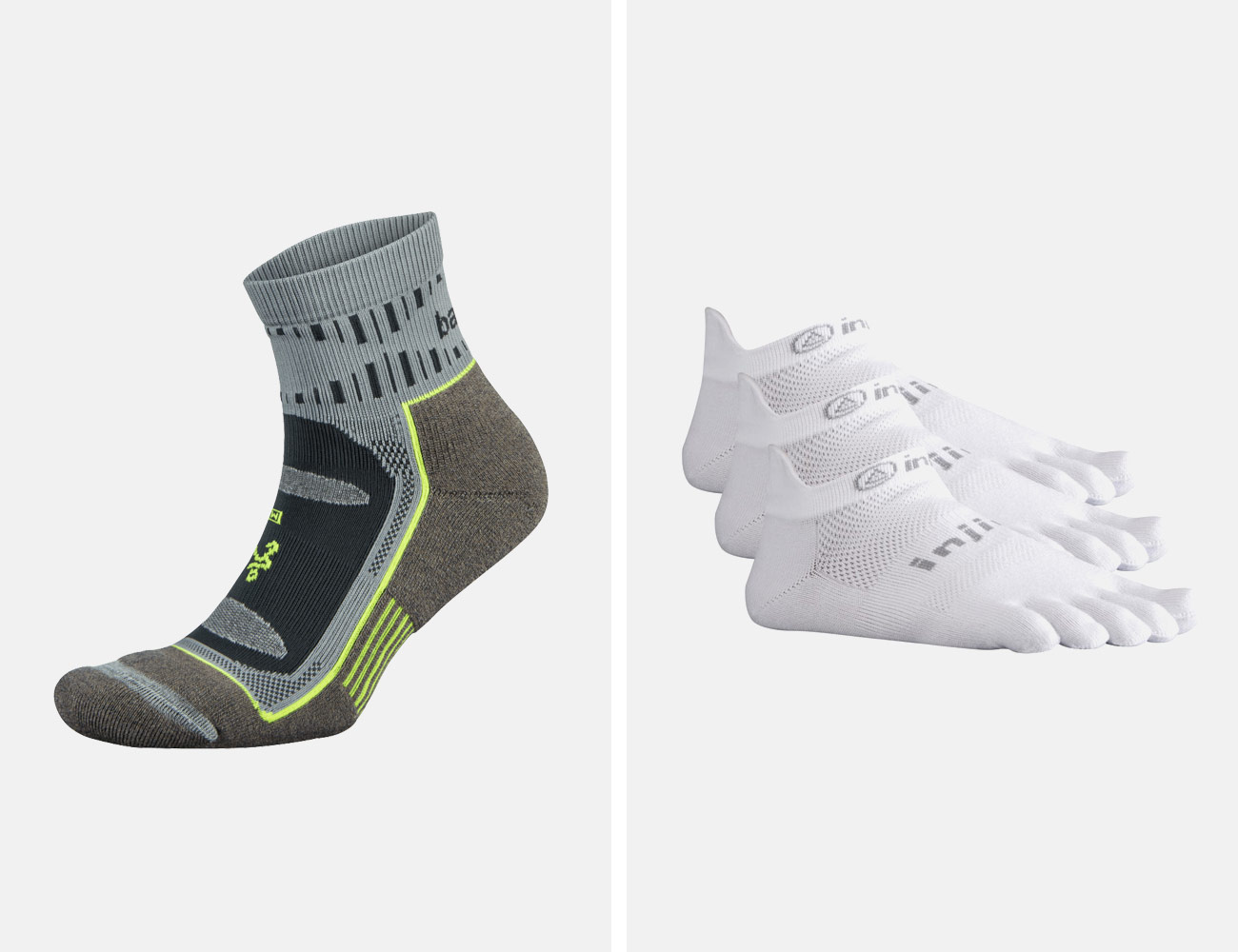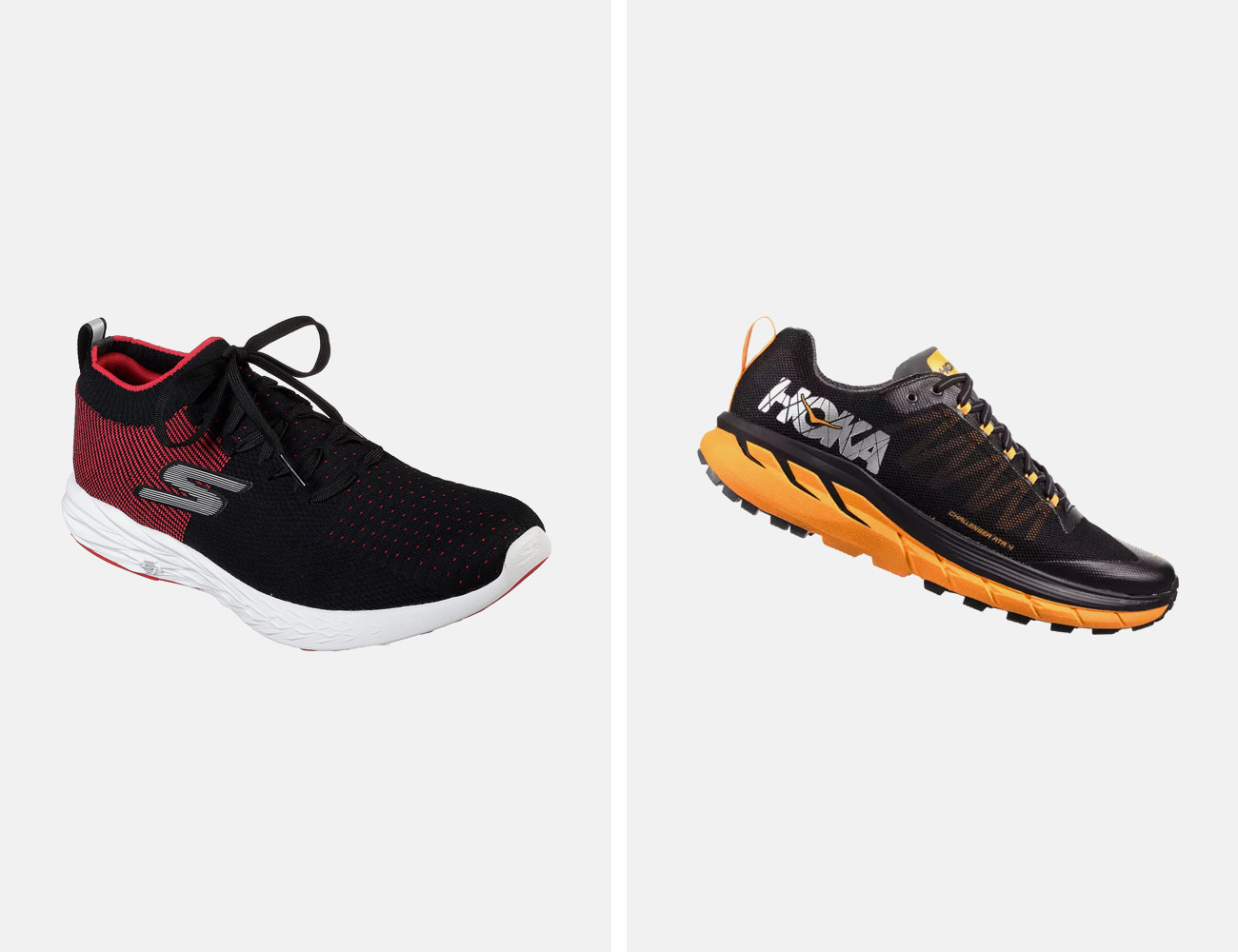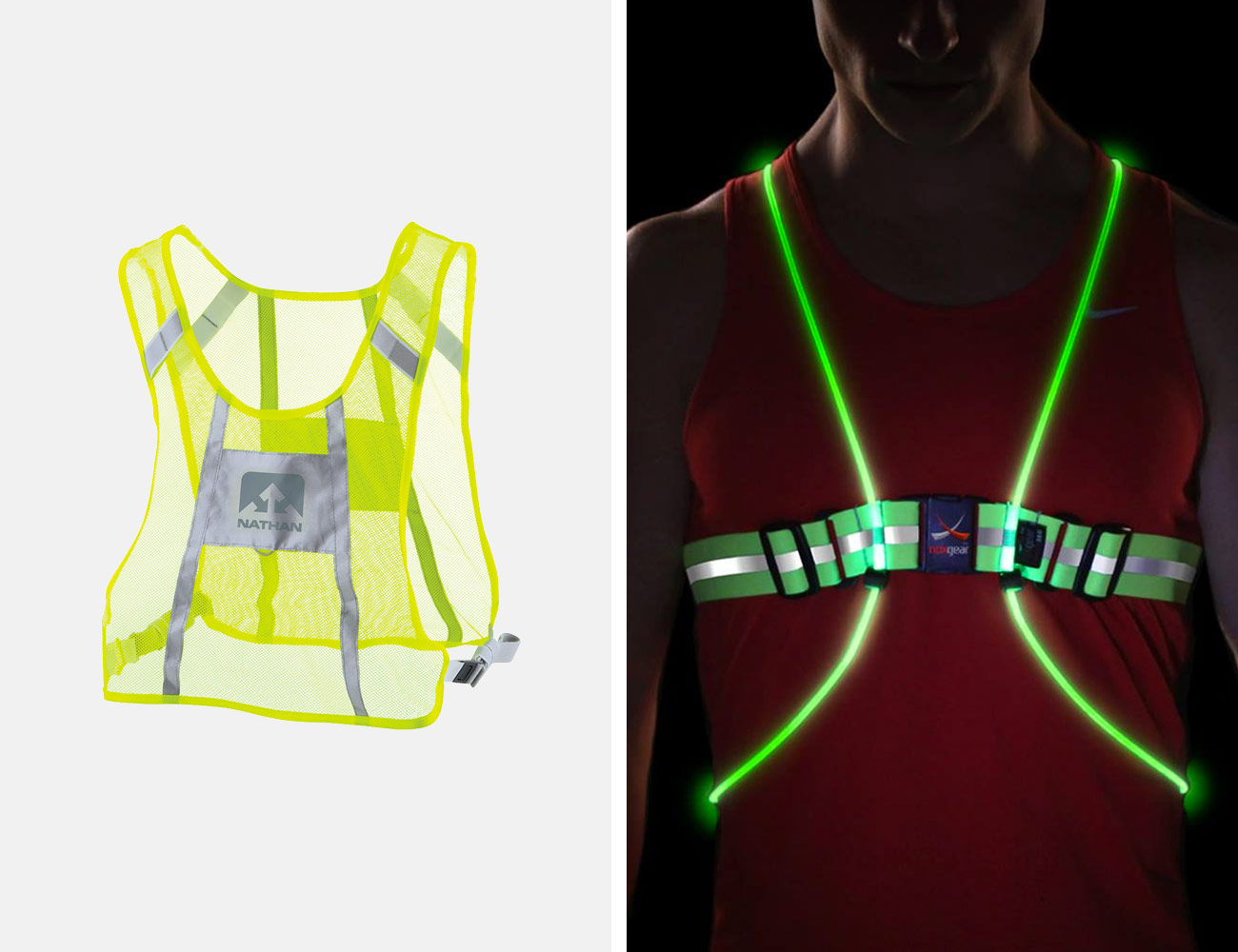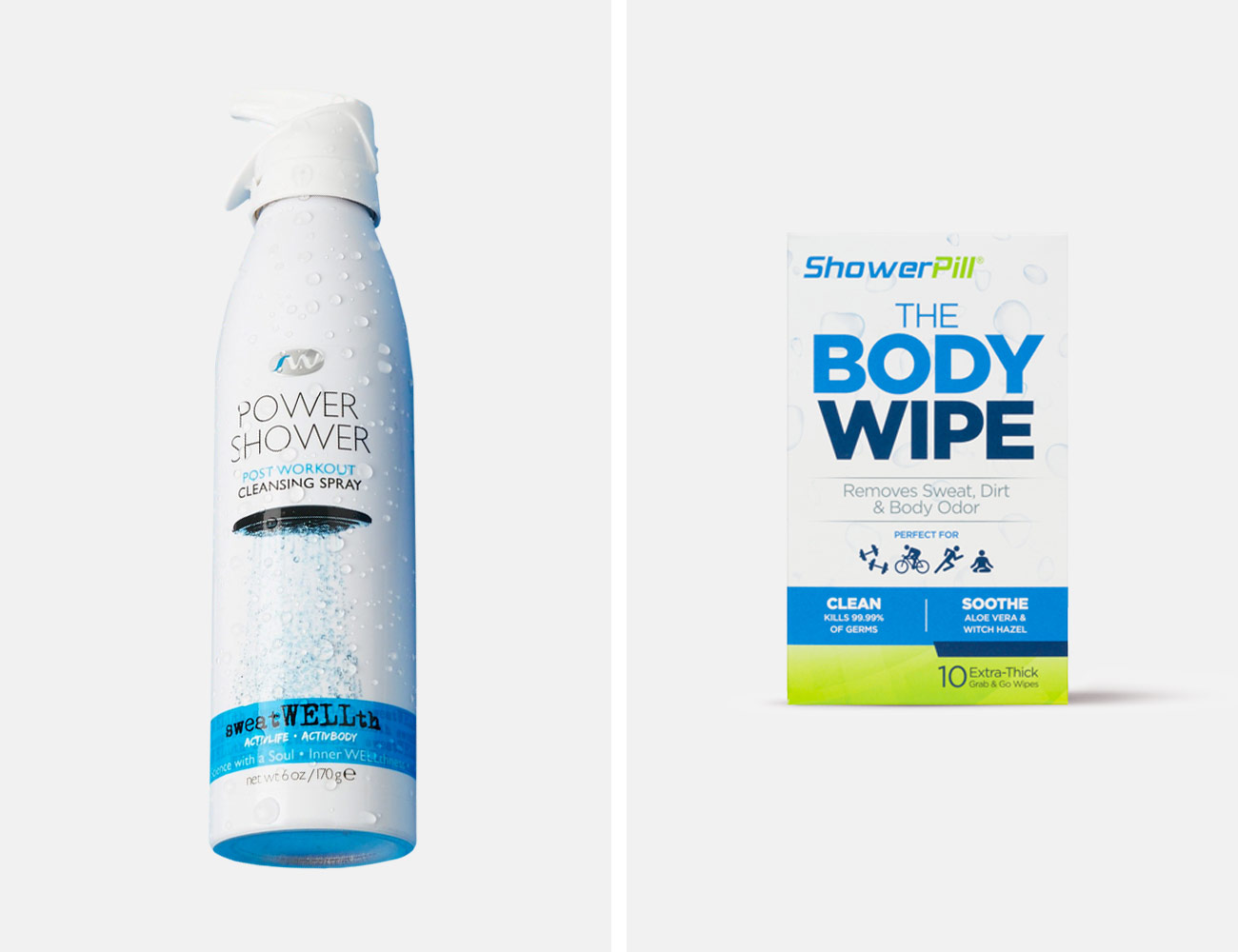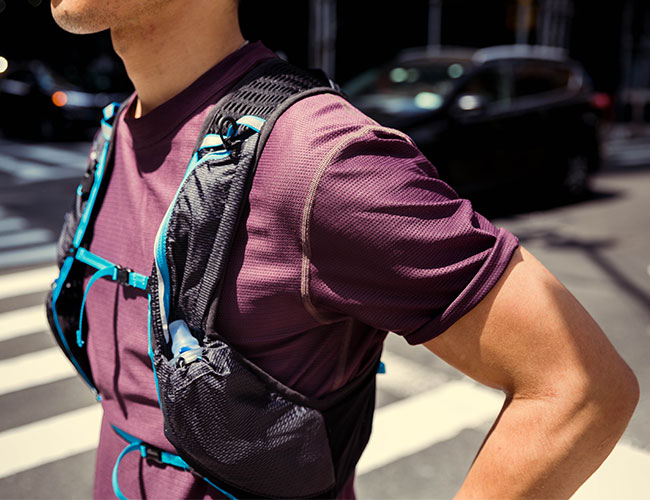Run commuting takes a particular type of crazy. As someone who dabbles in it, I get it. It’s a bit aggressive to strap a pack on your back filled with everything you need for the day and hit the streets full-stride. But the perks are many: no subway fee, no feeling like a sardine — they add up quickly. It’s an easy way to build up your mileage and it’s often faster than driving if you live in a congested city.
I’ve run commuted off and on for the past nine months in New York City. Most recently, I’ve been commuting from Brooklyn to our office in Manhattan (just over 5-miles), and I’ve learned that with a little prep and the right gear, it’s one of the faster ways to get from point A to point B. I also chatted with a handful of run-commuting experts: Michael Wardian, an American marathoner and ultramarathoner who lives in DC and regularly commutes eight miles to his office; Gordon Wright, president of Outside PR in California, who has run up to 15.4 miles to (and from!) work during training periods; Matthew Imberman, a run coach for Brooklyn Distance Running and an antique jewelry dealer who runs 10 miles to or from work year-round; Marco Anzuares, head cross country coach at City College and professor of Health and Exercise Science, and Ben Taylor, who runs one to three times a week, about three miles each way in Burlington, VT.
What to Know Before You Go
Before heading out for the first time, our experts recommend taking the time to plan everything out. Figure out if it’s easier to run home as opposed to running to work. Can you leave everything at your office and pick it up the next day? Depending on the distance you’re running, and how many times a week you want to run, there’s a variety of options. And like anything else, you’ll have to test everything out a few times to find out what works best for you. The trick is that there’s no right way to run commute — it’s more about figuring out what makes your life easier and let’s you sneak in those extra miles.
A few insider tips: Don’t overcommit.”You can do half-commutes,” Wright shares. “I more often drive part-way to work, park the car, and run around six miles. After work, I’ll get in the same run apparel or fresh ones I’ve stashed and run back to my car.” According to Imberman prep is also key, “I typically take clothes to work at the beginning of the week, so I have stuff to change into, and then I leave some running gear at work so I can run home.”
As for food, if you like to bring a lunch, I recommend bringing in as many of your weekly meals as you can at once on Monday and then not worrying about it for the rest of the week. Packing food every single day gets tricky, and all of the bouncing around the food will do makes anything liquid a no-no. “I’m a brown bagger most days, especially for breakfast and lunch, and transporting fruit running is the trickiest thing to solve. I run with berries in my hands with paper towels stuffed in the case and then re-apply the rubber band to them,” Wardian explains. “I try to keep everything packed in plastic bags. I’ll bring oatmeal and organic baby food to add to it. I slide bananas in the outside pockets [of my backpack] and wrap fruit in a shirt and plastic, so if it does gush, it’s not going to ruin my clothes.” If all that sounds like a hassle, buying lunch is the most straightforward solution.
The Gear
Backpack
The most essential piece in your run commute kit is the one that transports everything — your backpack. You want a backpack that has a breathable back panel, since you will sweat carrying everything, as well as one that adjusts to your body. Tightening all of the straps keeps the bag in a comfortable place, so there’s no chafing against your neck or lower back. “I use the Journey 20L [from Nathan],” Wardian says. “It’s a practical bag for running — it’s a roll top, with a shell that comes over it, so if it dumps, everything is protected.” Looking for a bag with enough pockets is critical.
“I’ll use my Ultimate Direction Fastpack to pack clothes, a small lunch, keys, wallet, ID badge, etc.,” Taylor says. I too tested the same pack and was a big fan of how many pockets it has. Keeping track of keys, credit cards and other small essentials is simple with pockets along the straps.
If you’re looking for something a little sleeker that doesn’t scream ‘I ran here’ try the Lululemon Surge Run Backpack II. With just two connection points across your chest, there’s not as much sweat that pools on your lower back, making it a lighter, breezier pack than most.
|
Packing Cubes
If you have to wear something professional and wrinkle-free to work, look into garment sleeves. “Your load is going to be heavier, but Eagle Creek makes a terrific, lightweight garment sleeve that cuts down on any wasted space and still protects your suit and shirt from wrinkling,” Wright says.
“I find rolling [a suit] works better than folding it. Folding it gets creased and depends on how hard you go and how floppy your backpack is,” Wardian says.
|
Waterproof Jacket
“I run commute year round, and it helps to invest in some lightweight, packable layers for the winter; a decent running pack/vest or shorts with a variety of pockets if you aren’t planning on lugging gear,” Imberman says. A waterproof jacket that doubles as a rain cover for your bag is also essential.
“I usually always have a waterproof jacket of some sort in my bag, and a space blanket, which is crazy because I’m not that far from civilization, but it could save your life,” Wardian says.
|
Socks
You’ll want some comfortable sweat-wicking socks that’ll go the distance with you. Wardian likes to run in Injinji socks, and I love the softness of the newest Balega Blister Resist socks. Use whatever works best for you, and bring an extra pair.
|
Shoes
You’re going to need a good pair of running sneakers. Run in the shoes you’re going to race in if you’re using this time to bulk up your mileage for race day. “Right now I’m using the HOKA One One Challenger 4 ATR, and the whole all-terrain line is made for commuting due to the shoes’ versatility and cushioning,” Wright says. “It’ll eat up whatever you throw at it and is a no-worries shoe.”
Whatever shoes work for you, make those your go-to pair for run-to-work days and add whatever you need to add to them to make them comfortable. Keep in mind that you’re also carrying a load, confusing the muscles in your body. Your Saturday or Sunday long runs will start to feel amazing without that extra weight, and on race day you’ll be thankful for the weight training. “I need to ensure my whole body stays in balance while on the run,” Anzures says. “I use Currex Run insoles in my Skechers Performance running shoes to keep my ankles and running posture in alignment.”
|
Reflectivity
Depending on your work hours and the season, it might be dark when you run. You’re going to need some reflectivity, whether that’s a vest or a headlamp or a blinking light that clips onto your hat. “I use a NoxGear safety vest to stay visible for morning runs or right after dusk,” Anzuares says.
“I have a reflective vest, and my backpack has some reflectivity on it. Nathan makes a flashing light that I’ll sometimes run with on my bag. Now I’m using a Petzl headlamp if it’s dark. The nice thing is I have lighting for most of the route, so I don’t have to worry about it as much,” Wardian shares. He also recommends adding 3M reflective tape to your gear if you don’t have anything reflective.
|
Post-Run Cleanup
If you have a shower at work, that’s great. “When I first started, there was no such luxury [as a shower], so I had to figure out how to not smell all day,” Wardian shares. “Especially if I have to meet clients, there are ways to do that. So, find a gym close to the office where you can shower, and usually, most offices have some personal space, so I’d put a suit and a couple of shirts, underwear, socks, ties, belt and a nice pair of shoes to change into when I need to look professional.”
If showering isn’t an option, there are always body wipes or cleansing sprays that you spray on and wipe off with a towel. “In the warm months, baby wipes and a bottle of witch hazel can work wonders, as can a small highly absorbent packing towel,” Imberman says.
|
Athletic apparel should perform whether you’re running a 5k or a marathon. But it should also by stylish enough to be seen in public after. Read the Story

